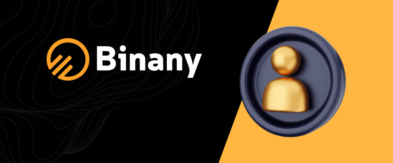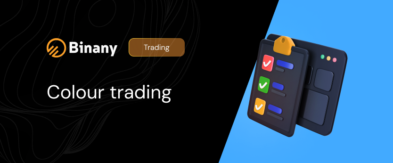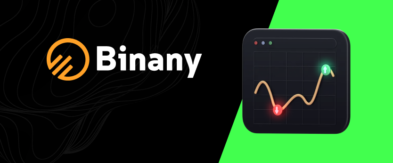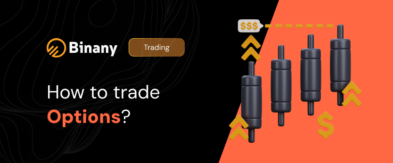How to Open a Trading Account Online: Open Demat Account Online in India
Online trading is the act of buying and selling financial products through an online trading platform. These platforms are typically provided by internet-based brokerage firms and are available to anyone who wants to try making money in the stock market through share trading. To get started, investors usually need a demat and trading account, and the process of demat account opening has become quick and seamless with online services. Whether you're interested in trading shares or other financial instruments, online platforms make it accessible to a wide range of users.
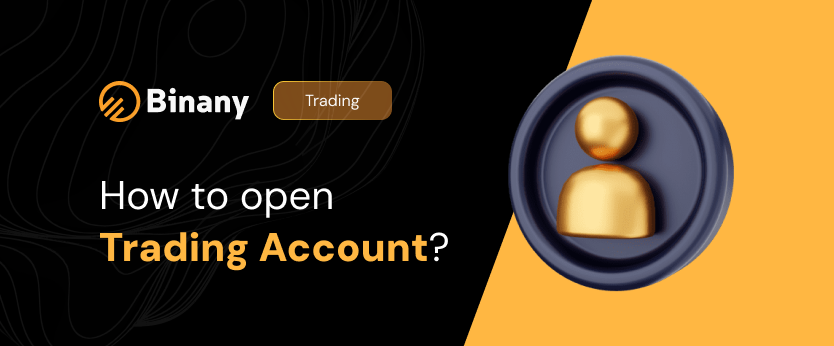
With online trading, you can execute a trade almost immediately. Transactions are conducted through web-based trading platforms or mobile apps, with traders having access to a wide range of assets, from stocks to cryptocurrencies. To get started, you need a trading account with a broker, and completing the proof of address verification is usually required during registration. With just a computer or a smartphone, as well as a good internet connection, anyone can engage in trading by opening an online trading account. Once registered, account holders can manage their investments, monitor market movements, and trade efficiently from anywhere.
This democratization of finance has led to a surge in retail trading, allowing individual investors to take control of their financial future in a way that was previously the exclusive domain of professional traders and financial institutions. Today, opening an account with a stock broker is more accessible than ever, though users should be aware of potential account maintenance charges. Many brokers also offer margin trading, giving investors the ability to trade with borrowed funds. Upon registration, traders receive an account number, which they use to access and manage their investments across various markets.
Basic Steps to Open a Trading Account
Opening a brokerage account is the gateway to the world of online trading. It is essentially a financial account that allows you to buy and sell various types of investments, including stocks, bonds, mutual funds, and ETFs. During the account opening process, you will be required to provide your account details, verify your identity, and choose the type of demat account you need — either a repatriable demat account (for NRIs who wish to transfer funds abroad) or a non-repatriable demat account (for those who prefer to keep their funds within India). Here are the general steps to open a brokerage account:
- Research Brokers: Look for a broker that fits your needs and trading style. Compare fees, account charges, trading platforms, customer service, and available resources. Some brokers even offer the option to open an account without hefty maintenance fees, making it easier for beginners to get started without a large upfront cost.
- Complete the Application: Apply online by providing personal information, such as your name, address, Social Security number, and employment information. You may also be asked about your trading experience to help the broker better tailor the services your account provides, ensuring that you have access to the appropriate tools and resources based on your investment knowledge.
- Review the Costs: Understand all the costs associated with the account, including commissions, account fees, and margin rates. If you are opening an account in India, make sure to also link your bank account number during the registration process, as it will be essential for fund transfers and withdrawals.
- Fund the Account: Deposit money through various means, such as wire transfer, check, or an electronic transfer from a bank. If you plan to engage in F&O trading (futures and options), ensure that your account is properly activated for such activities, as a basic account cannot always support derivatives trading by default. Many brokers now allow you to open a trading account online and fund it instantly for a seamless start.
- Set Up Your Trading Preferences: Decide on your trading settings, including setting up features like stop-loss orders. If you open a trading account online with a broker like Angel One, you’ll often have the ability to customize your dashboard easily. Many brokers also allow you to open a demat account online or even get a demat account online for free, making it more convenient to start trading without high initial costs.
Step 1: Select a Type of Brokerage Account
The first step to open trading account online is to decide what type of account is right for you. This is determined by your investment goals, risk tolerance, and financial situation. Here are the key options:
- Standard Brokerage Account: A general investment account that allows you to buy and sell securities.
- Retirement Account (IRA, Roth IRA, etc.): These accounts offer tax advantages for retirement savings.
- Margin Account: Allows you to borrow money from the broker to purchase securities.
Understanding your investment style is crucial when selecting a brokerage account. Are you a conservative investor seeking steady growth or comfortable taking more risks for higher returns? Consider whether you are interested in day trading, where positions are quickly entered and exited, or if you are more of a long-term investor.
Types of Assets You Can Trade:
- Stocks: Ownership in a company
- Bonds: Debt securities, essentially loaning money at an interest rate to the issuer
- ETFs (Exchange-Traded Funds): A basket of securities that track an underlying index
- Mutual Funds: A pool of funds collected from many investors for the purpose of investing in securities such as stocks, bonds, money market instruments, and other assets
- Options: Contracts that give the holder the right, but not the obligation, to buy or sell an underlying asset
- Commodities: Physical goods like gold, oil, and agricultural products
- Forex (Foreign Exchange): Currency trading
Choosing the right type of account is the foundation of your trading journey, and understanding your investment style is paramount. It is crucial to align your account with your broader financial goals and to select the asset types that are most appropriate for your risk tolerance and investment strategy.
Step 2: Study the Functionality of the Selected Account and Its Costs
Once you’ve selected the type of brokerage account that suits your investment style, it is essential to delve into the functionality offered by this account and the associated costs.
Functionality:
- Trading Platform Features: Does it have intuitive and robust trading software, with professional-grade charting tools, indicators, and news feeds?
- Access to Markets: Does it allow trading in the markets you are interested in (e.g., international stocks, commodities, Forex)?
- Mobile Trading: Does the brokerage offer a user-friendly mobile app for trading on the go?
- Customer Service and Support: Is help available when you need it?
Costs:
- Commission Fees: These are the fees that the broker charges you for executing a trade. Some brokers offer zero-commission trading, while others might charge a flat fee per trade or a percentage of the trade volume.
- Account Maintenance Fees: Some brokers charge periodic fees just for keeping an account open with them.
- Margin Rates: If you’re using a margin account, you’ll be borrowing money from the broker to buy securities, and they will charge you interest.
- Other Fees: Check for hidden fees, like withdrawal fees, inactivity fees, or fees for access to premium research and data.
Knowing what you are paying for is vital. It is crucial to read the fine print and understand how much your trading activity will cost you.
Step 3: Choose a Brokerage Company
Choosing the right brokerage is a significant step. Here is what you should pay attention to:
- Regulatory Compliance: Ensure that the broker is registered with the necessary regulatory bodies. In the U.S., this includes the SEC and FINRA.
- Reputation and Reviews: Research online reviews and ratings. Ask for recommendations and read about other traders’ experiences with the broker.
- Security and Insurance: Ensure that your funds will be protected. Look for membership in organizations such as the SIPC in the U.S., which provides limited customer protection if a brokerage firm fails.
Step 4: Submit an Application: Documents Required to Open Demat Account
To open a trading account, you need to formally apply with a brokerage firm. This process involves:
- Providing Personal Information: This includes your name, address, date of birth, employment information, and Social Security number (or equivalent in other countries).
- Financial Disclosure: You will need to provide information about your income, net worth, and investment objectives.
- Risk Assessment: Many applications include a series of questions designed to assess your risk tolerance.
- Documentation: You may need to submit identity proof, such as a passport or driver’s license, and a recent utility bill to verify your address.
- Application Review and Approval: After submission, the brokerage will review your application, which may take a few days. Upon approval, you will receive your account information.
Step 5: Fund & Open Free Demat Account
Once your account is set up, the next step is to put money into it, which you can use to start trading. Thanks to modern account opening online processes, funding your account has become fast and seamless. Many brokers even offer free demat account opening, allowing you to begin trading without paying initial setup fees. Here’s how you might do this:
- Bank Transfer: Most brokers allow you to link your banking account directly for easy transfer of funds.
- Wire Transfer: This is a faster, though often more expensive, method of transferring money.
- Check or Money Order: Some brokers still accept paper checks or money orders.
- Rolling Over a Retirement Account: If you’re opening a retirement account (like an IRA), you might fund it by rolling over funds from another retirement account.
Each brokerage will have specific instructions and options available, so it is important to consult with them directly. Whether you are looking into demat account opening online or planning to open a share trading account, understanding the types of trading offered — such as intraday, delivery, or futures and options — will help you choose the right setup for your investment goals.
How to Open an Account Online and How Difficult It Is
Opening a trading account online is generally a straightforward process. First, select a reputable brokerage firm that offers both investing and trading services. Next, visit the broker’s website to apply for a trading account by completing an online application form. You’ll need to submit personal and financial information, including proof like a cheque or bank statement, as these are often required to open a trading account.
You also need a demat account to hold your securities electronically. Today, a demat account can be opened alongside your trading account — often in one seamless step — and sometimes you can even open a free demat account. Whether you opt for a regular demat account or a basic services demat account, the choice of account depends on your trading volume and needs. A demat account enables you to store shares securely, while the trading account provides the platform to buy and sell them.
After submission, wait for approval, which may take a few business days. Once your account is opened, you can fund your account and start trading. The account is used not only for stock trading and intraday trading, but also for transferring holdings from one account to another; in some cases, a demat account can be transferred between brokers if needed. Some brokers allow linking a demat account directly during setup for easier management.
While offline trading options still exist, trading and investment today are largely dominated by online platforms. Setting up your profile has been simplified significantly, often resembling the ease of creating a new email account. This digital shift allows account holders greater flexibility and real-time market access as per their investment goals.
Conclusion
Online trading allows individuals to engage with financial markets, making investment more accessible than ever. The first step in this journey is to learn how to open the right type of account, as it is mandatory to open both a trading and demat account for buying and selling securities. The account used for transactions is different from the one where securities are held, but today, brokers often bundle them together for convenience.
One can open a nominal account with minimal charges if they are just starting out, or choose a more advanced account as per their investment needs. Selecting an account type wisely is essential, as the right trading account depends on your trading style, volume, and goals. Understand the associated costs carefully and opt for a reliable broker who can support your growth in financial markets.
It’s crucial to approach trading with knowledge and caution, as it involves significant risk. Always trade responsibly, invest money you can afford to lose, and consider seeking advice from a certified financial professional.

Financial writer and market analyst with a passion for simplifying complex trading concepts. He specializes in creating educational content that empowers readers to make informed investment decisions.



